Odiorne Point State Park is a beautiful park tucked into the seacoast of New Hampshire. Many people come here to picnic or to explore the tide pools at the waters edge. There are many reasons Odiorne is a paradise by the sea. Yet there is also so much more to discover here. Odiorne Point has many layers of history. This was the summer home of Native Americans. It also became the home of colonists, tourists and military personnel in World War Two. Whether you’re walking through the remnants of Fort Dearborn or learning about our Colonial past, Odiorne Point is a great place to live history.
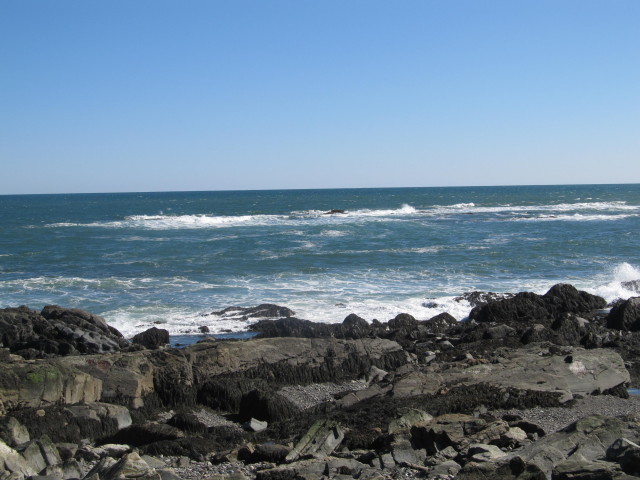
Photo By Colleen Ann.
Native History.
The landscape of Odiorne Point is very diverse. It has beautiful sweeping tracts of oceans, and intimate tiny harbors. I admired the shoreline as I made my deliberate way along. On a clear day you can look out over the water and see out to the Isle of Shoals. The first people to inhabit Odiorne Point were the Abenaki and the Penacook. These tribes came to know this place as Pannaway. They came to take advantage of the plentiful resources in the area. During their stay, they took time to fish the plentiful waters off the coast. They would also comb the beaches for Mussels and Clams. They lived off the land in a very simple, yet sustainable way. As I walked the shoreline, I wondered what Odiorne had looked like when they had been here. Back when it was an unsettled stretch of land, it must have been very different from today.

Photo By Colleen Ann.
Colonial Times.
Walking down the paths that skirted the beach, I came upon a granite marker. The sun glinted off the meticulously polished granite. As I studied it I noticed the dates and the words inscribed on it. The lone marker commemorated the landing of the first English settlers in New Hampshire. In 1623 Englishmen came here to fish and trade with the natives. Later, in 1660 John Odiorne joined the settlement that would later bear his name. He bought land and made his living on the point. The family continued to live here, generation after generation until World War II. Many families came here and made a living against this harsh landscape. This beautiful place holds an important place in our state’s history. I came here so many times during my childhood. Yet only in the last few years have I begun to realize Odiornes historical significance. Every visit my appreciation for its importance grows.
Maritime Moments.
The ocean dominates the landscape of Odiorne Point. Much of the history that surrounds the point includes the ocean. Those that settled here depended on fishing and trading, and Odiorne was situated perfectly for both of these occupations. The colony thrived, and created a base for further exploration of this area. In the 1700’s the settlement was booming and the area was growing as well. The establishment of Portsmouth would not have been possible, had Odiorne not thrived. Also Odiorne Point supported Portsmouth as it grew. Portsmouth would later go on to become a sizable port. To this day, Portsmouth Harbor has significance within the region. The growth of New Hampshire would not have been possible without that first successful settlement at Odiorne.
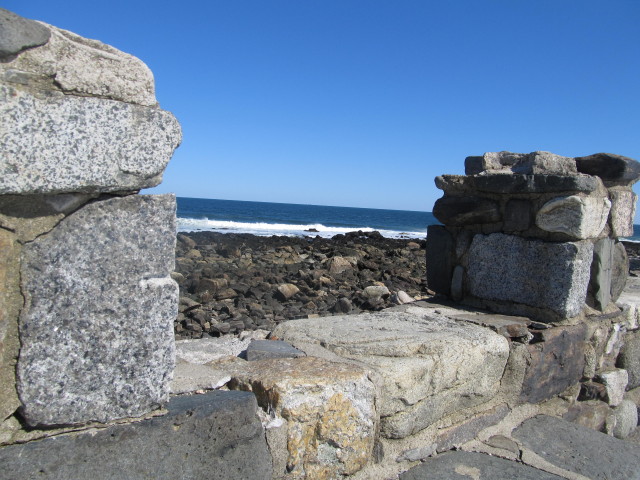
Photo By Colleen Ann.
Cottage Life.
After the Civil War, Odiorne became home to many summer visitors. In its heyday the property was home to dozens of cottages. Affluent families from all over came to Odiorne to enjoy the summer. Even to this day, there are reminders of the rich history. The Seacoast Science Center was built around what had been a summer cottage. Stand in the right place, and you can still see part of the buildings stone and mortar structure. All over the park there are subtle signs of the history. Near the parking lot, a wide lawn spreads out beyond the trees. It is surrounded by a meticulously built stone wall. Stonewalls crisscross the entire property. There are posts that mark things that are gone, and staircases that lead to nowhere. As I made my way towards Battery Seaman the trail opened up. It flattened out and on either side, large trees had been planted. In the middle of the woods, the trail had turned into a forgotten country lane. At Odiorne, the forgotten moments of the past surround you.
Coastal Defense.
Later on in the day, I parted from the sea following the trails into the woods. Minutes later, I came upon the large underground bunkers. During World War II, The property was turned into a military base. The Bunkers that make up Battery Seaman once housed the two 16” guns. In 1942 the federal government bought all of the property and transformed the point into a major coastal defense. The grand summer homes were replaced by bunkers and gun batteries. The idyllic place of summer homes became the main defense for the Portsmouth Naval Shipyard. Thankfully, the war never came this far, and the huge guns were never fired. Yet the face of the property was changed forever. Even to this day there are signs in all corners of the park that point to its military past. When you come into the park, you are greeted by Battery 204. Near the beach there are old mortar rings where gun placements used to sit. Further back the bunkers of Battery Seaman sit buried. Everywhere at Odiorne you are given the opportunity to walk among this past.
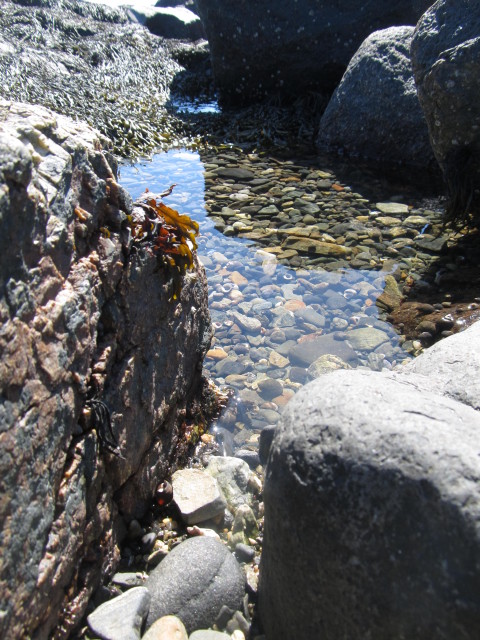
Photo by Colleen Ann.
Odiorne Point is unique because it is the home to hundreds of years of colorful history. From the summers when the Abenaki fished these shores, to the Bunkers on the point, Odiorne is home to a wide spectrum of history. The amazing thing is it all comes together perfectly. They coexist side by side, creating a beautiful mosaic. Together these intersecting reminders serve as sentinels to the rich history of New Hampshire. Odiorne is a great place to get outside and discover an integral part of our history.
Click Here to view the trail map that shows where some of these historic site are within the park.

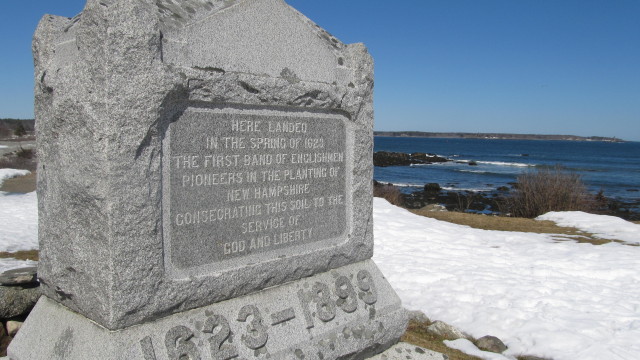
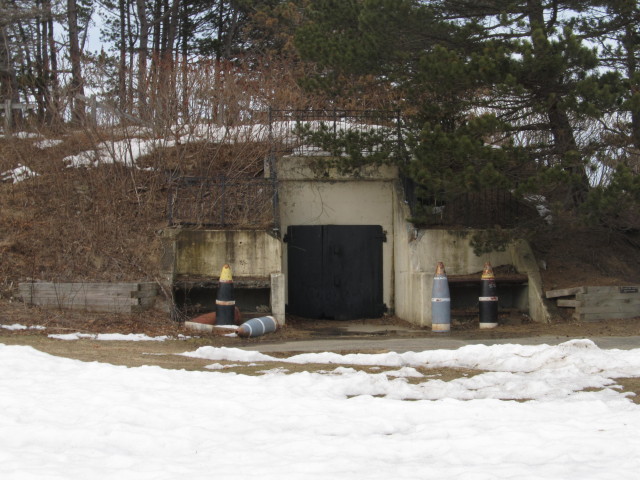
I spent a lot of time back in the my days with my family on outing on the point, for picnics outings and family gatherings. my grandmother was Eleanor Odiorne.
Wayne, interesting, my grand mother is also an Odiorne, Jeannette . I’ll have to look up your grandmother in my genealogy book
Any chance there are still any Odiorne’s in the Portsmouth area? I’m and distant relation Odiorne from Fort Worth area and would enjoy meeting family. We are going to visit the park this Friday the 29th.
Just visited the park last night in the rain and mud. The World War II bunker is a reminder of a different past, an era not far removed from our own, just 71 years ago.
How many houses were torn down?
And how much concrete and manpower sunk into the earth to create that machine-structure?
The rubbish we leave behind
Is a sorry excuse for the leisure
We so enjoy today.
I am currently in Portsmouth and planning to visit Odiorne Point on Friday the 29th. I am an Odiorne from Fort Worth and distantly related to John. My family has long known about Odiorne Point, but the distance prevented any of us from visiting before now. Are there any Odiorne’s still in this vicinity? I would like the opportunity to meet with distant cousins
My children and I spend a great deal of time at the point. We still live in Rye as. I am 9th generation granddaughter of John Odiorne the Odiorne name ended when my great great grandmother Sarah Abbie Odiorne married . After the point was taken we lived in the house Samuel Wallis left my great grandparents. We have never left Rye sadly we do not live in any of the family homes .
Is the bunker regularly open? I’m a photographer and would love to take pictures of inside it!
My name is Carol Sowers, my mother Mary Francis Sowers. (Haralson). Her mother Louise haralson (Odiorne) daughter of Olivia Rowe
I think I might be related
All due respect to the Odiorne family. 40 years of history occurred before the Odiorne’s setting on the spot in 1660.
David Thompson had obtained a patent to settle on the “Piscataqua River” from Sir Ferdinando Gorges. He then obtained funding to start a fishing base there by indenturing himself to the investors for 5 years. (This indenture would start when the fishing base began and was honored) He had explored the area with Captain Thomas Dermer and Squanto and had rescued a young native from one of the islands. Sir Ferdinando Gorges charter passed the seals in 1620 and he immediately he instructed Thompson to sail for New England. 8 weeks later Thompson arrived with a construction crew and built “Pannaway” which was a small fort named for what the natives called the area we now know as Odiorne’s Point.
In 1622 Thompson placed cannon at the fort and in 1623 he brought his wife and family along with several others to settle there. At the same time, one of Thompson’s compatriots, Edward Hilton, started a new settlement at Dover Point.
An interesting note: Though the land originally settled by him is named after a family that came later, Thompson later bought an island in Massachusetts Bay and built a home there. The island is still called Thompson Island.
I’m sure there is much more that can be told about the time at this beautiful spot from 1620 to 1660.
Would anyone know who Kenneth otis odiorne is iam trying to find out if he’s alive or not I found out that he was my grand father?.